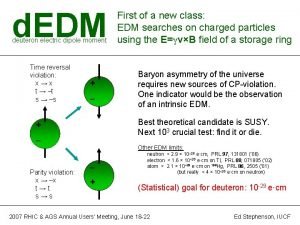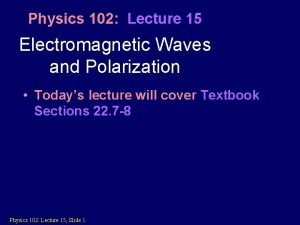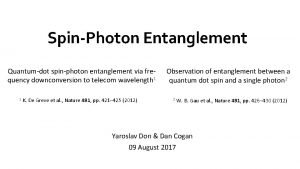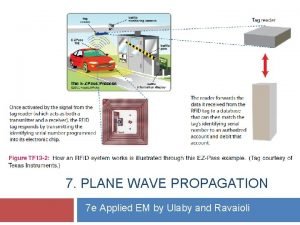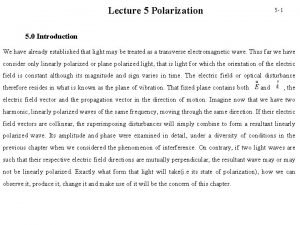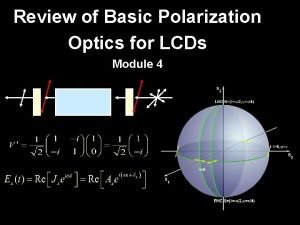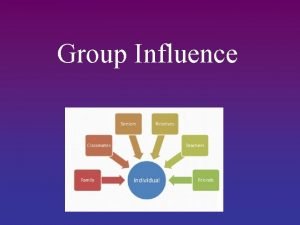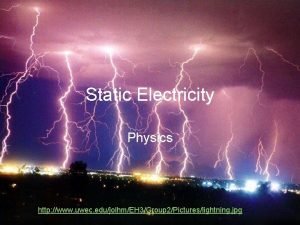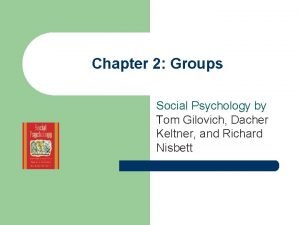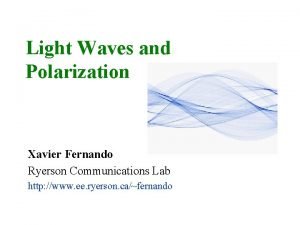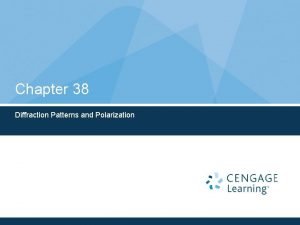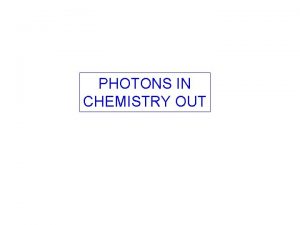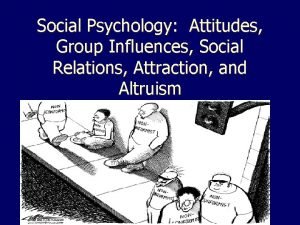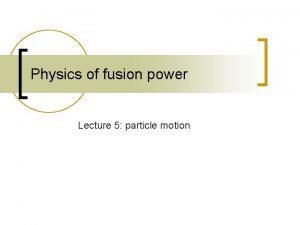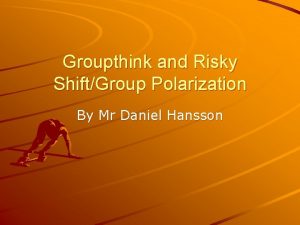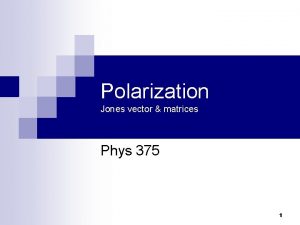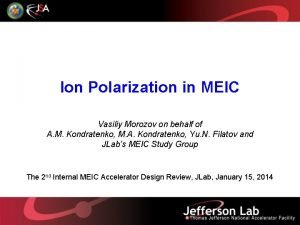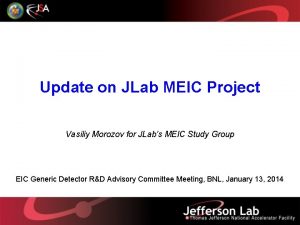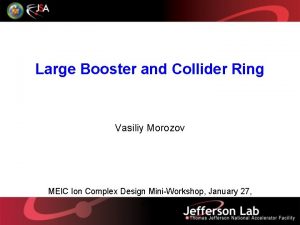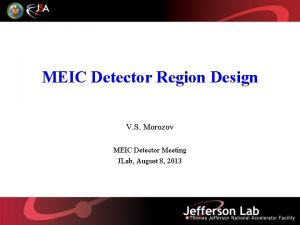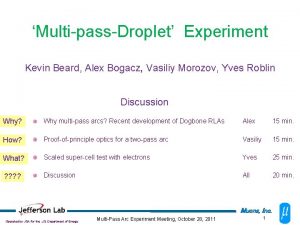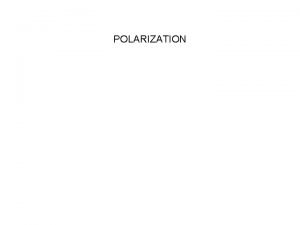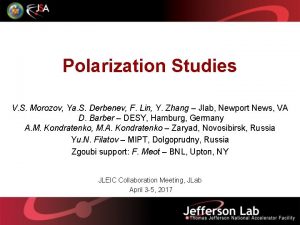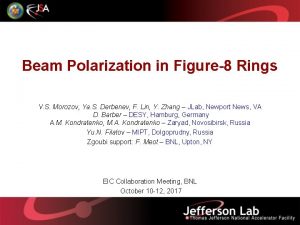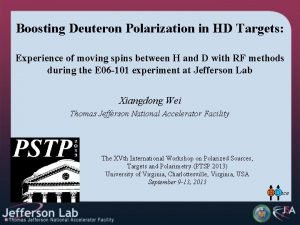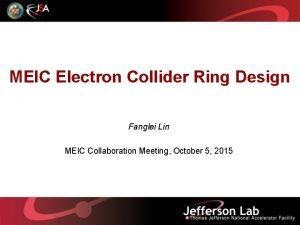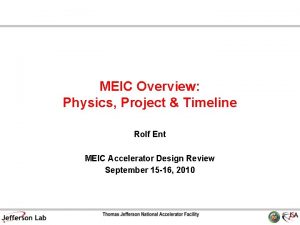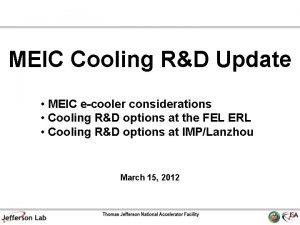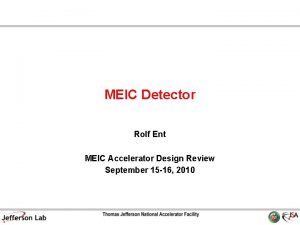Deuteron Polarization in MEIC Vasiliy Morozov for MEIC


















- Slides: 18

Deuteron Polarization in MEIC Vasiliy Morozov for MEIC Study Group using results of IUCF and COSY SPIN Collaborations led by A. D. Krisch figure-8 concept originally proposed by Ya. S. Derbenev and develop by Yu. N. Filatov, A. M. Kondratenko, and M. A. Kondratenko High Energy Nuclear Physics with Spectator Tagging Old Dominion University, March 10, 2014

Outline Deuteron polarization Spin dynamics and spin resonances Figure-8 concept Summary Spectator Tagging Workshop 3/10/15 2

Spin Density Matrix Spin-1 state Mathematical expectation of an operator Mathematical expectation for an ensemble of particles where is the fraction of particles in the state. If all beam particles are in the eigenstates then Spectator Tagging Workshop 3/10/15 3

Vector and Tensor Polarizations Cartesian vector and tensor spin operators Density matrix representation If all particles are in the eigenstates the only non-zero expectation values Rotations Spectator Tagging Workshop 3/10/15 4

Polarized Ion Source Deuterium hyperfine states (in strong magnetic field) COSY’s polarized ion source Spectator Tagging Workshop 3/10/15 5

Spin-1 Polarimetry Differential spin-dependent cross-section (using lab-frame polarizations) Polarizations extracted using azimuthal count rate dependence and effective analyzing powers Spectator Tagging Workshop 3/10/15 6

Spin Resonances Spin tune (number of spin precession per turn) in a conventional ring A spin resonance occurs whenever the spin precession becomes synchronized with the frequency of spin perturbing fields – Imperfection resonances due to alignment and field errors – Intrinsic resonances due to betatron oscillations – RF-induced resonances – Coupling and higher-order resonances Spectator Tagging Workshop 3/10/15 7

RF-Induced Spin Resonance Convenient controllable resonance model for experiments Can be used for spin flipping Experiment using 1. 85 Ge. V/c deuteron beam at COSY Spectator Tagging Workshop 3/10/15 8

Spin Flipping Sweeping an rf magnet’s frequency through a spin resonance can flip the polarization Spin rotation and Froissart-Stora formula Spectator Tagging Workshop 3/10/15 9

Siberian Snake Device rotating the spin by some angle about an axis in horizontal plane – A “full” Siberian snake rotates the spin by 180 – Overcomes all imperfection and most intrinsic resonances Spin tune with a snake Solenoidal snake at low energies Dipole snake at high energies Spectator Tagging Workshop 3/10/15 10

Figure-8 Concept Figure-8 shape has been chosen for all MEIC rings to achieve high ion (and electron) polarization – Spin precession in one arc is exactly cancelled in the other – Zero spin tune independent of energy – Spin control and stabilization with small solenoids or other compact spin rotators Advantages of the figure-8 scheme for ions – Efficient preservation of ion polarization during acceleration § Energy-independent spin tune § High polarization of all light ions – Ease of spin manipulation § Any desired polarization orientation at the IP § Spin flip – A simple way to accommodate polarized deuterons § Particles with small anomalous magnetic moment – Spin control without affecting the beam dynamics Spectator Tagging Workshop 3/10/15 11

Pre-Acceleration & Spin Matching Polarization in Booster stabilized and preserved by a single weak solenoid – 0. 7 Tm at 9 Ge. V/c – d / p = 0. 003 / 0. 01 Longitudinal polarization in the straight with the solenoid Conventional 9 Ge. V accelerators require B||L of ~30 Tm for protons and ~110 Tm for deuterons BIIL Booster beam from Linac to Collider Ring Spectator Tagging Workshop 3/10/15 12

Optical Effect of Solenoid Linear optics without solenoid Linear optics with solenoid Betatron tune shift Spectator Tagging Workshop 3/10/15 13

Polarization Control in Collider “ 3 D spin rotator” rotates the spin about any chosen direction in 3 D and sets the stable polarization orientation Control of radial (nx) spin component Control of vertical (ny) spin component nx control module (constant radial orbit bump) Control of longitudinal (nz) spin component x z ny control module (constant vertical orbit bump) y z nz control module Spectator Tagging Workshop 3/10/15 14 IP

Polarization Control in Collider Placement of the 3 D spin rotator in the collider ring pin S 3 D tator Ro IP Integration of the 3 D spin rotator into the collider ring’s lattice – Seamless integration into virtually any lattice Spin-control solenoids Vertical-field dipoles Radial-field dipoles Lattice quadrupoles Another 3 D spin rotator suppresses the zero-integer spin resonance strength Spectator Tagging Workshop 3/10/15 15

Deuteron Polarization Behavior Radial polarization at IP assuming d = 2. 5 10 -4, p = 100 Ge. V/c nx ny nz Vertical polarization at IP Longitudinal polarization at IP Spectator Tagging Workshop 3/10/15 16

Spin Flipping The universal 3 D spin rotator can be used to flip the polarization Consider e. g. longitudinal polarization at the IP at 100 Ge. V/c Polarization is flipped by reversing the fields of the solenoids in the radial and longitudinal spin control modules Polarization is preserved if – The spin tune is kept constant • No resonant depolarization – The rate of change of the polarization direction is slow compared to the spin precession rate • >0. 1 ms for protons and >3 ms for deuterons Spectator Tagging Workshop 3/10/15 17

Summary Dynamics of the deuteron vector and tensor polarizations in an accelerator are not independent. They are connected through rotations. Preserving the vector polarization also preserves the tensor polarization. Manipulation of the vector and tensor polarizations can be understood in terms of rotations and controlled accordingly. Figure-8 is an elegant solution for preservation and control of the polarization of any particle species: acceleration, orientation, spin flip. Spectator Tagging Workshop 3/10/15 18
 Electric dipole
Electric dipole Polarization in physics
Polarization in physics Photon polarization
Photon polarization Social trap
Social trap Volplane
Volplane Light polarization equation
Light polarization equation Polarization ellipse equation
Polarization ellipse equation Social loaf
Social loaf Charge by polarization
Charge by polarization Group polarization definition psychology
Group polarization definition psychology Linear polarization
Linear polarization Diffraction pattern
Diffraction pattern Polarization in chemistry
Polarization in chemistry Door in the face phenomenon
Door in the face phenomenon Groupthink vs group polarization
Groupthink vs group polarization Electric field equation
Electric field equation Unit 14 social psychology
Unit 14 social psychology Groupthink vs group polarization
Groupthink vs group polarization Jones matrix for half wave plate
Jones matrix for half wave plate
